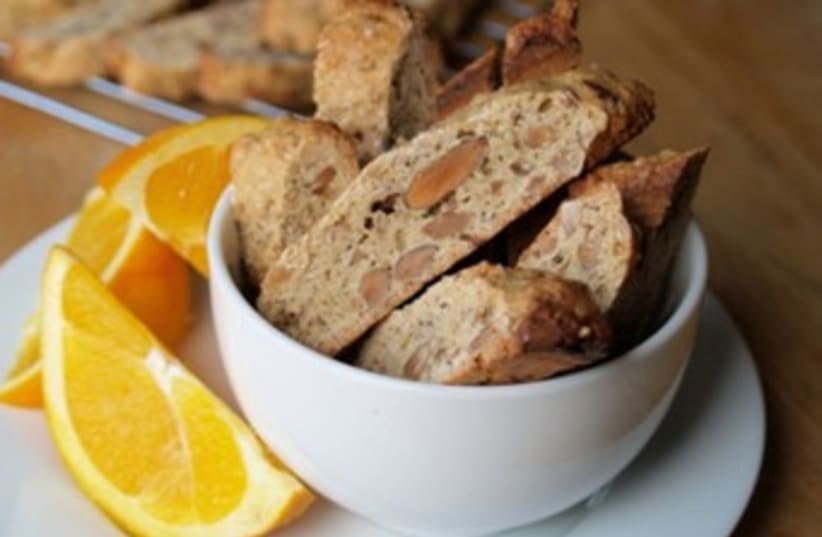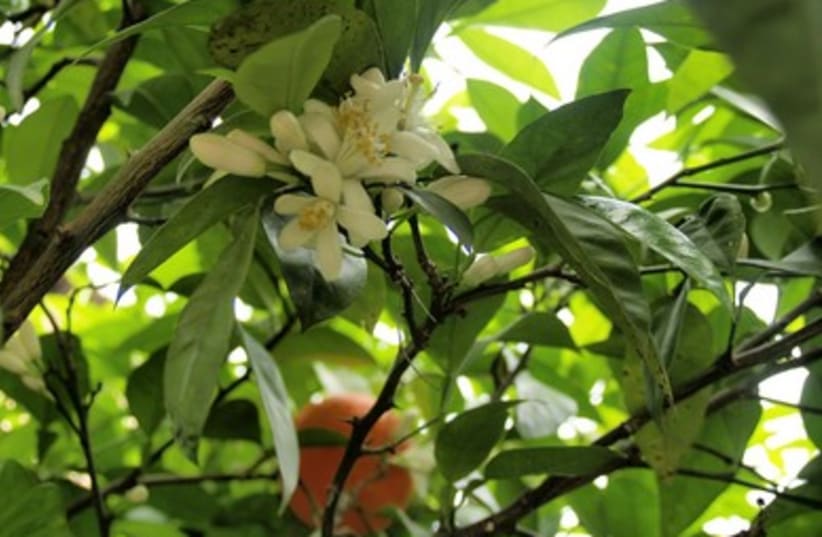
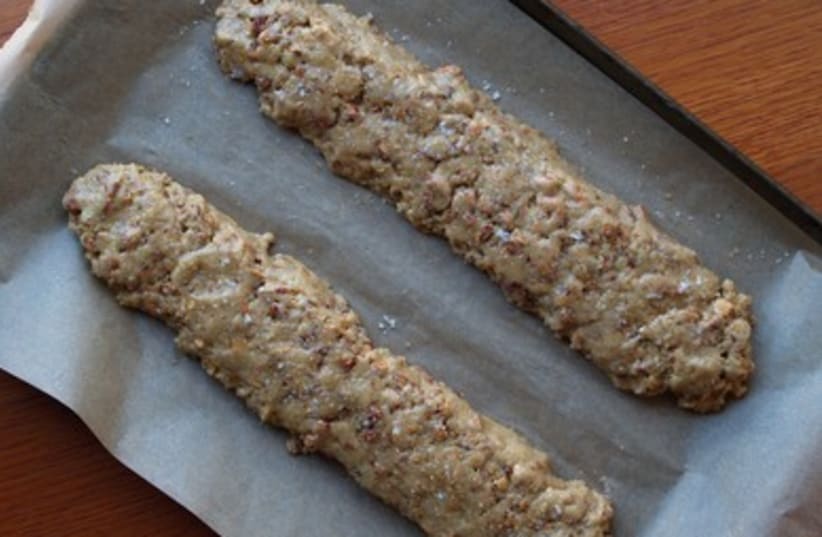

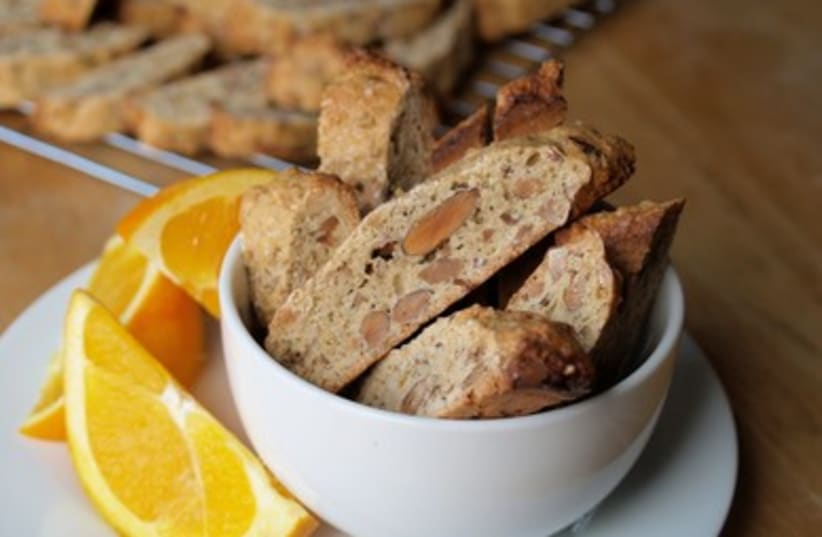
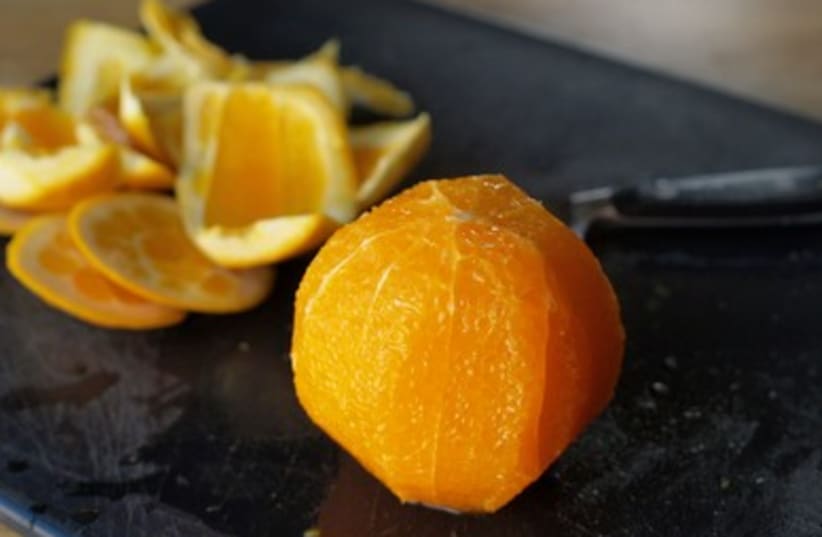
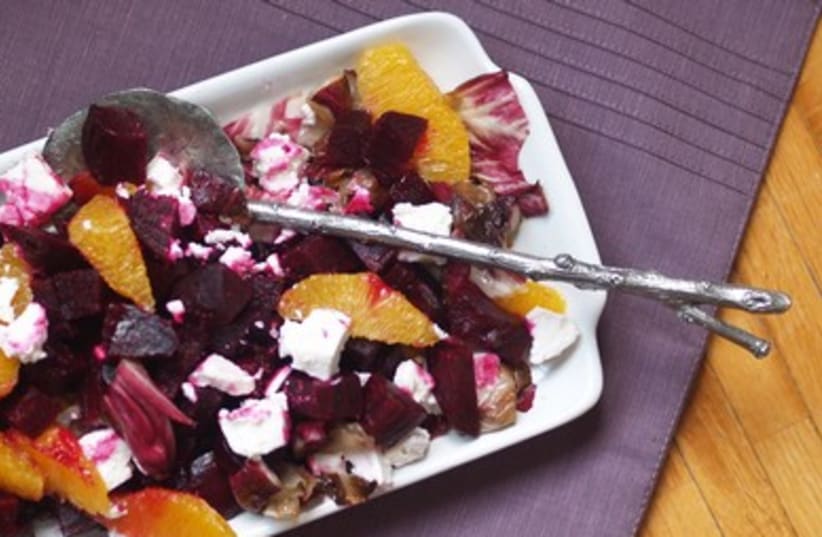

Meanwhile, over in Central America, indigenous vanilla served as the leading flavoring and didn’t stray far from home. Its passport only arrived in the mid-nineteenth century in the form of a newly-discovered hand pollination technique for the orchid that bears the vanilla bean. With its global cultivation and rapid commercialization,vanilla use spread quickly;now nearly every nibble of cookie, lick of ice cream, and slice of birthday cake explodes with the extract’s sweet, rich depth. But with ubiquity comes predictability, and vanilla can sometimes feel, well... ordinary.So let’s journey away from Madagascar, Tahiti, and Mexico, the three main producers of vanilla, and visit the Mediterranean to rediscover floral essences. Rose water, distilled from the petals of damask roses, is traditionally used in eastern Mediterranean (Iran, Syria, Turkey, and Lebanon) pastries and puddings. It is luxurious and wraps you in a warm, intoxicating embrace. Orange blossom water is commonly used in cooking and baking in Egypt and the Maghreb (northern Africa – Morocco, Tunisia, Algeria, and Libya). It is the innocent, but no less seductive, younger sister of triple sec, both parented by the Seville orange (introduced to Spain by the Moors) and distilled from the bitter fruit’s blossoms and peels respectively. While these flowers most frequently flavor sweets, some dried rose petals find themselves crushed and mixed into peppery spice rubs for lamb, and orange blossom water graces plates of savory Moroccan orange and olive salad.To taste the extracts in their purest form, make café blanc – white coffee – by mixing a few drops of rose or orange blossom water into a mug of boiling water with a pinch of sugar. Let the steam envelop you while drinking in this non-alcoholic digestif. The flowers hit your nose before they hit your taste buds, even when trapped in a confection that melts on your tongue. Add too much and you think you’re eating soap. With a light touch, though, there is just enough flavor to hint at a flower and then fade away.Rose water in baklava gathers all the flavors in a sensuous symphony. It intensifies the sweetness of the honey, mellows the earthy concoction of pistachios, walnuts, and almonds, and leaves a trace of intoxicating yet unassuming bouquet on your fingers sticky with shards of phyllo. Orange blossom water mingles discreetly with almonds. Its bittersweet aroma whispers in your ear and tiptoes behind you as you glance over your shoulder to see who is following. Make room in your closet next to your little black dress and in your pantry next to the vanilla. Pick up rose water and orange blossom water in a Middle Eastern grocery store or online. Slip one of the unexpected extracts into a sweet or savory dish and see if anyone can guess the stealthy ingredient. The answer will be on the tips of their tongues and the tips of their noses, and then it will fade. They’ll reach for another taste, and then another. Their palates will be awakened, and they’ll ask for the recipe.You can buy rose water and orange blossom water in most Middle Eastern and Indian grocery stores, or online. There is no standard concentration, so use a light hand at first. I use the widely available and moderately concentrated Cortas brand which is a pure distillation but does not carry kosher certification. Two kosher certified brands are Sadaf, which also makes pure distillations, and Nelsen-Massey, which dilutes more concentrated flower oils. Rose water pairs really well with pistachios, raspberries, and strawberries, and I substitute orange blossom water for vanilla any time I bake with almonds.
Almond and orange croquantsCroquants are crispy French nut cookies and their name comes from the French verb, croquer; to crunch. Most croquants found in France are light, merengue-like nibbles. This recipe however, comes from the south of France near the border of Italy, and the croquants are shaped, sliced, and twice-baked like biscotti. The dough is very quick to mix together but the cookies do take a while to bake, cool, slice, and then bake again. The raw dough tastes slightly bitter from the orange blossom water. Don’t worry – the final cookies are sweet and not at all bitter.Like all authentic biscotti, these cookies contain no shortening, making them a great parve dessert that doesn’t require any ingredient substitutions. They are great with your morning coffee or after-dinner tea. The recipe was adapted from the French food blog, Chocolate and Zucchini.Makes approximately 4 dozen cookies- 2 C whole raw almonds - 1 ½ C sugar- 2 large oranges for zest and juice (½-¾ C juice = 8 - 12 T)- 4 C all-purpose flour - 1/2 t kosher salt- 1 T baking powder- 2 large eggs- 2 T orange blossom water- Optional: sugar in the raw (also called "turbinado" or "demerara" sugar) for sprinkling
Preheat. Preheat oven to 350°F.Toast. Spread almonds in a single layer on a cookie sheets. Toast in the oven until the scent of almonds wafts over from the kitchen (approximately 15 minutes). When you take them out of the oven, the insides should be light brown and the skins should start to crackle as the nuts cool.Mix. In a large mixing bowl, rubtogether the orange zest and sugar with your fingers to release the aromatic oils in the zest. Then add flour, salt and baking powder and mix. I use my stand mixer because the dough is very thick and can be difficult (but not impossible) to mix by hand. Add eggs one at a time and orange blossom water and continue to mix. At this point, the dough will be very crumbly, resembling coarse cornmeal. Add the fresh orange juice (strain out any pulp), 1-2 tablespoons at a time, and mix until the dough comes together and can be pressed into a ball. It should be very sticky, but not wet.You’ll generally use ½ cup (8 tablespoons) but you might need up to ¾ cup (12 tablespoons) ofliquid, depending on the weather. If you don’t have enough juice, supplement with cold water. The dough is ready when it is similar in consistency to a scoopable chocolate chip cookie dough.Shape. Cover a cookie sheet with parchment paper. Shape the dough on the parchment into 2 long loaves, approximately 3 inches wide. Make sure to leave enough room between the loaves because they will spread a little bit when baking. Wet your hands and slide them over the loaves to smooth out the sticky dough. If you’d like, sprinkle lightlywith sugar in the raw.Bake. Bake loaves for 35 - 40 minutes. They are ready when golden brown and firm to the touch.Cool slightly. Remove loaves from the parchment and cool for 5-10 minutes until you can comfortably handle them. If you let them cool for too long, they'll be hard to slice.Slice. Slice the still-warm loaves diagonally into skinny slices, no more than1/2-inch wide.Bake again. Lay the slices on the cookie sheet and bake for another 15 minutes until crisp. After the first 10 minutes, flip the cookies over so they toast evenly. Store. Let the cookies cool completely and store in an airtight container.
Crisp. If the croquants do get stale, toast them in a 350° F oven for about 5 minutes. Once they cool, they’ll crisp right up.Beet, orange, and feta saladThis recipe, adapted from Yotam Ottolenghi’s vegetarian cookbook, Plenty, is a spin on the classic Moroccan salad of oranges and olives, meant to cool down the palate from spicy foods. The addition of beets makes a more substantial hearty and earthy side dish. I’ve replaced the olives with feta as the salty counterpart to the sweet beets and acidic citrus. The orange flower water in the dressing provides a sharp, slightly bitter flavor to round out the dish – use a very mild oil to really let the orange blossom shine. Be careful when handling beets as they stain everything that gets in their way, including your hands. I’ve provided a few time- and effort-saving shortcuts for several of the steps. Serves 6 as a side dish- 4 large beets- 3 T olive oil, divided- 1 head of radicchio- 3 oranges- 1/3 C crumbled feta cheese- 1/3 C grapeseed or other mild oil (canola or vegetable oil will work too)- 2 t orange flower water- 3 T red wine vinegar- salt and pepper- 3 T chopped parsley for garnish (optional)Roast (or boil). Preheat oven to 400ºF. Line a roasting or cookie sheet with foil. Scrub the beets, remove their greens, and place in the pan. Drizzle with 2 tablespoons of the olive oil, sprinkle with salt and pepper, and cover tightly with another piece of foil so that the beets don't dry out. Roast for 1 - 2 hours, depending on their size. They're ready when tender and easily poked with a fork. Once the beets have cooled for a few minutes, but are still warm to the touch, peel off their skins. Cut them into small, bite-sized chunks. If you don’t want to turn on your oven, instead of roasting, boil the cleaned beets in salted water for 45 minutes to 1 hour until fork tender, and proceed as above.Grill (or don’t). Heat a grill pan (or a grill if you have one) over medium-high heat. Quarter the radicchio, leaving the core intact, and drizzle with the remaining 1 tablespoon of olive oil. Grill the radicchio for several minutes on each surface until the leaves start to soften and brown. When cool, cut out the core and chop into bite-sized pieces. If you like the bitterness inherent in radicchio, skip the grill and just chop the leaves into small pieces. Segment (or slice). Cut the tops and bottoms off of the oranges and then slice down the sides to remove all the peel, including the white pith. You’ll be left with round, naked oranges. Over a small bowl, use a paring knife to remove each orange segment by slicing between the membranes (then throw out the membranes). Or, slice the orange flesh into circles.Compose. Spread the beets and radicchio on a large plate. Dot with orange segments and crumbled feta.Dress. In a jar, mix together the grape seed oil, orange flower water, and vinegar. Taste for salt and pepper. Drizzle the dressing over the salad and garnish with parsley, if you’d like.
This article was written in consultation with Gayle’s collection of cookbooks, including Aromas of Aleppo (Poopa Dweck), The Book of New Israeli Food (Janna Gur), New Moroccan (Mourad Lahlou), Olive Trees and Honey (Gil Marks), The Book of Jewish Food (Claudia Roden), Persian Food from the Non-Persian Bride (Reyna Simnegar), and Spice: Flavors of the Eastern Mediterranean (Ana Sortun).
Gayle Squires publishes recipes and photographs on the blog, Kosher Camembert. Her cooking and baking is inspired by international travel .
